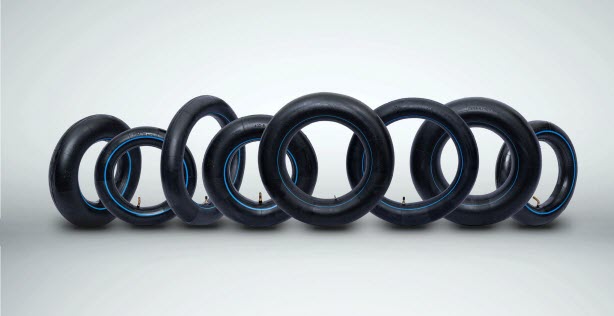In the ever-evolving landscape of automotive technology, the future of Tyre innovation is a critical component shaping the efficiency and sustainability of vehicles. Butyl tubes, with their advanced properties, are positioned to play a pivotal role in influencing fuel efficiency, a factor of paramount importance in the automotive industry's ongoing pursuit of eco-friendly solutions.
Understanding Butyl Tubes in the Context of Fuel Efficiency
- Durability and Reduced Rolling Resistance Butyl tubes contribute to fuel efficiency by enhancing the durability of Tyres. Their robust construction reduces rolling resistance, a key factor influencing fuel consumption. As vehicles encounter less resistance, they require less energy to move, ultimately improving fuel efficiency.
- Optimized Air Retention The air retention properties of butyl tubes play a significant role in maintaining optimal Tyre pressure over extended periods. Properly inflated Tyres ensure that the vehicle operates at peak efficiency, translating to improved fuel economy.
- Weight Considerations Butyl tubes are known for their lightweight nature. In comparison to traditional tubes, the use of butyl tubes contributes to overall weight reduction. Lighter Tyres result in less energy expenditure, positively impacting fuel efficiency.
The Impact on Commercial Fleets
- Cost Savings Commercial fleets stand to benefit significantly from the fuel efficiency impact of butyl tubes. Reduced fuel consumption translates to cost savings for fleet operators, making the adoption of this technology economically viable in the long run.
- Extended Maintenance Intervals The durability of butyl tubes leads to extended maintenance intervals, reducing the frequency of Tyre replacements. This not only contributes to cost savings but also minimizes downtime, ensuring commercial vehicles spend more time on the road.
Environmental Considerations
Beyond the immediate economic advantages, the impact of butyl tubes on fuel efficiency aligns with broader environmental goals:
- Reduced Carbon Emissions Improved fuel efficiency means lower carbon emissions. As vehicles consume less fuel, the overall carbon footprint of transportation decreases, contributing to environmental sustainability.
- Resource Conservation The longevity of butyl tubes contributes to resource conservation by reducing the need for frequent Tyre replacements. This aligns with the principles of sustainable practices, promoting responsible resource management.
Advancements in Tyre Technology
- Innovations in Compound Formulations Ongoing research and development in butyl tube compositions aim to further enhance their fuel-saving properties. Scientists are exploring new compound formulations that could minimize rolling resistance even further, thus maximizing fuel efficiency gains.
- Integration of Smart Technology The integration of smart sensors within butyl tubes is on the horizon. These sensors would continuously monitor Tyre pressure and temperature, ensuring optimal performance and further improving fuel efficiency.

Challenges and Opportunities
- Market Adoption and Awareness Despite their potential, widespread adoption of butyl tubes for their fuel-saving benefits might face challenges related to market awareness and acceptance. Educating consumers and industries about their advantages will be crucial for their widespread implementation.
- Continued Research and Development Continuous research into Tyre technology, including butyl tubes, is vital. Investing in further advancements to optimize their fuel-saving capabilities will drive the industry toward more sustainable and efficient solutions.
Global Impact and Sustainability
- Regulatory Support and Environmental Policies Governmental support through regulations and policies encouraging the adoption of eco-friendly technologies, including fuel-efficient Tyres like those incorporating butyl tubes, will be instrumental in accelerating their use.
- Collaboration for Sustainable Mobility Collaboration between stakeholders-automakers, Tyre manufacturers, policymakers, and consumers-is imperative to drive sustainable mobility. Embracing innovations like butyl tubes fosters a collective effort toward reducing carbon emissions and promoting a greener future.
Conclusion
The future of Tyre technology, particularly with the integration of butyl tubes, holds promising implications for fuel efficiency. As the automotive industry continues to prioritize eco-friendly solutions, the role of butyl tubes in reducing rolling resistance, optimizing air retention, and contributing to overall fuel economy positions them as a key player in shaping the future of Tyre innovation.